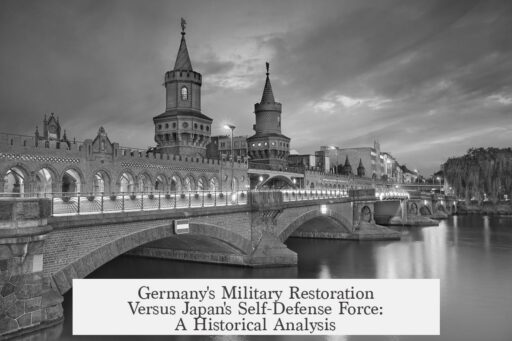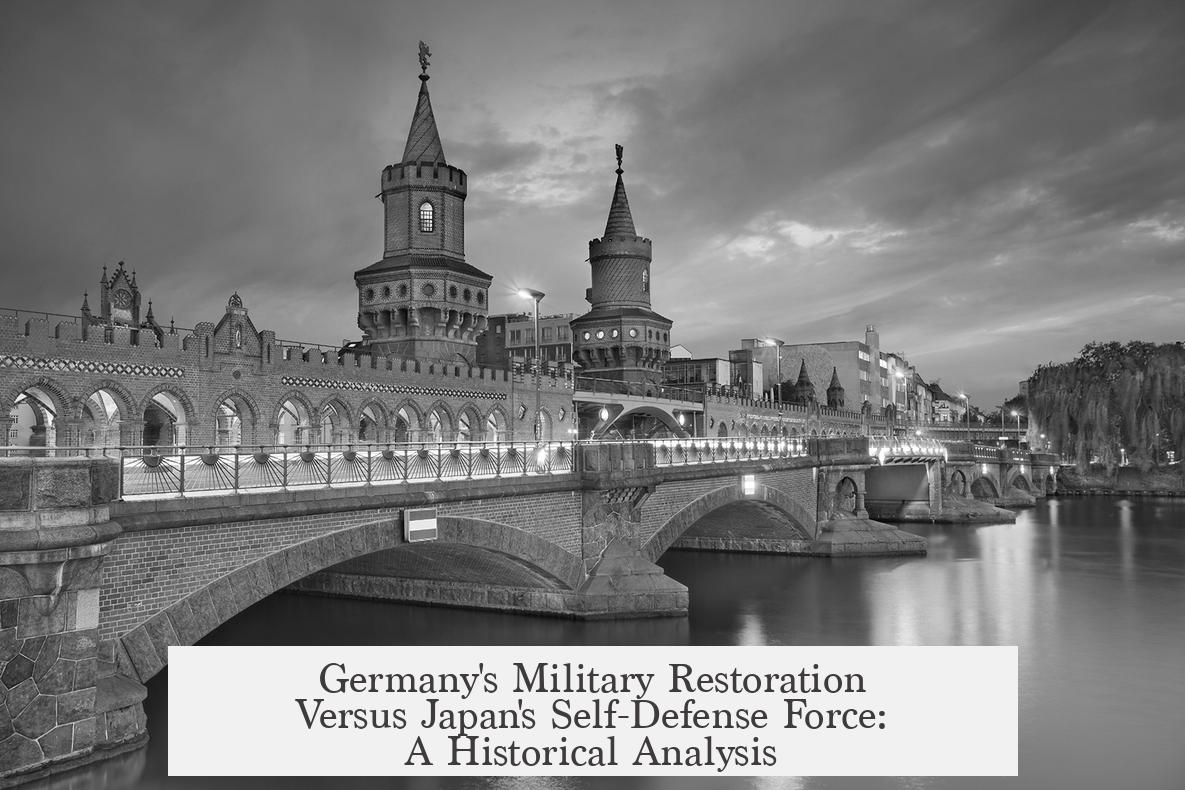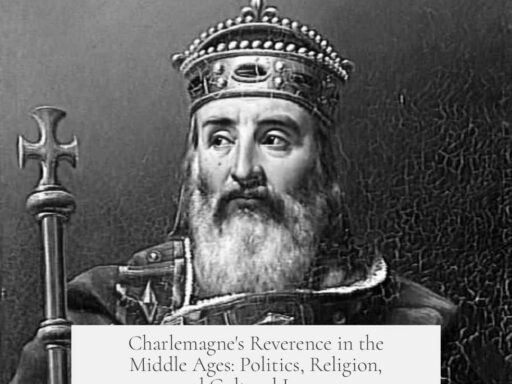Japan was allowed to have its own military but maintains only a Self-Defense Force due to constitutional, political, and societal factors, while Germany was eventually fully rearmed within NATO frameworks. The main reasons center on Japan’s pacifist constitution, strong postwar anti-militarism, and public resistance, despite significant U.S. pressure to rearm during the Cold War. Germany’s path differed because of distinct political developments and alliances after WWII.
Japan’s postwar constitution, adopted in 1946, includes Article 9, which renounces war and prohibits the maintenance of a traditional military. Article 9 emerged from postwar idealism and allied occupation reforms. Unlike Germany’s eventual full military restoration, Japan’s constitution explicitly restricts armed forces to a self-defense capacity only.
The United States encouraged Japan to rearm during the early Cold War. After the Korean War broke out in 1950, the U.S. viewed Japan as a critical bulwark against communist expansion in Asia. Rapid Chinese communist victory and North Korea’s aggression raised urgent concerns. U.S. leaders pressed Japan to establish military forces to counterbalance regional threats.
Despite American pressure, Japan’s political leadership and public remained cautious. Prime Minister Yoshida Shigeru resisted full rearmament. Japan was economically devastated following WWII, and the military had left a troubled legacy, including domestic political violence. Yoshida’s regime favored economic recovery over military buildup.
In response to U.S. insistence, the National Police Reserve was created in 1950 under U.S. supervision. This force gradually evolved into the Japan Self-Defense Forces (JSDF) by 1954. However, these forces remained explicitly limited to defensive roles and avoided traditional military status. American policymakers unsuccessfully pushed for larger forces, with Vice President Nixon in 1953 openly questioning Article 9.
Japanese domestic politics further complicated rearmament efforts. After Yoshida’s departure, successors Hatoyama Ichiro and Kishi Nobusuke favored more significant military expansion. Conservative politicians and U.S. officials sought greater JSDF capabilities. Yet, public opinion strongly opposed increased militarism. The memory of wartime militarism remained fresh and unpopular.
The tension between government ambitions and public sentiment culminated in the massive 1960 Anpo Protests. These protests erupted against proposed treaty revisions linked to U.S.-Japan security arrangements. Prime Minister Kishi’s authoritarian actions, combined with his wartime history, intensified opposition. The protests became the largest postwar social movement in Japan.
Following the protests, Kishi resigned, and his successor Ikeda Hayato pledged not to amend Article 9. This pledge calmed political tensions and helped preserve the pacifist constitutional framework. Since then, Japan has limited its military role to self-defense functions under the JSDF, supported by widespread public support for pacifism and anti-militarism.
In contrast, Germany’s postwar trajectory differed. Initially disarmed under Allied occupation, West Germany was rearmed within NATO by the mid-1950s. This rearmament reflected Western strategic needs during the Cold War and Germany’s integration into European defense frameworks. Germany’s constitution (the Basic Law) allows for armed forces, and its military remains subject to strict democratic controls.
Japan’s pacifist constitution, intense societal opposition, and political resistance set it apart from Germany’s military restoration. While the U.S. encouraged Japan to develop defensive forces, Japan’s unique constitutional constraints and democratic pressures prevented full remilitarization. This has left Japan with the JSDF rather than a conventional military.
| Aspect | Japan | Germany |
|---|---|---|
| Constitutional Restriction | Article 9 bans war and traditional military | Basic Law permits military within democratic controls |
| U.S. Role | Pressured Japan to rearm but accepted limitations | Encouraged full rearmament within NATO |
| Public Opinion | Strong anti-militarism; resistance to military expansion | Less public resistance post-WWII |
| Postwar Military Status | Self-Defense Forces only | Integrated conventional armed forces |
- Japan’s postwar constitution restricts military forces to self-defense only.
- U.S. pressured Japan to rearm during the Cold War but accepted constitutional limits.
- Strong Japanese public opposition to militarism shaped postwar military policy.
- The Anpo Protests of 1960 ended serious efforts to amend Article 9 or remilitarize fully.
- Germany’s postwar rearmament occurred in a different political context with NATO integration.
Why was Germany eventually allowed to have its own Military but Japan to this day still just has a Self-Defense Force?
In a nutshell, Japan’s unique postwar path—shaped by Article 9 of its constitution, deep-seated public opposition to militarism, and a series of intense domestic protests—has resulted in it maintaining a Self-Defense Force rather than a traditional military. Germany, meanwhile, followed a very different route that led to full rearmament. But let’s unpack this fascinating divergence step-by-step, shall we?
After World War II, both Germany and Japan found themselves in ruins, their militaries dismantled under the watchful eyes of Allied powers. Yet, decades on, their military statuses look strikingly different. Germany fields a conventional military force; Japan officially sticks to what it calls the “Self-Defense Forces.” Why?
First, it’s important to clarify a common misconception: Japan was never outright forbidden from rearming by the United States. In fact, during the early Cold War, the U.S. actively pushed Japan to build up forces to act as an anti-communist shield in Asia. The Korean War alarm bells triggered a strategic pivot. American leaders worried about the spread of communism—China had already fallen, Korea teetered on the edge, and Japan was next in line, so they nudged Japan to rearm carefully.
However, what set Japan apart was the famously pacifist Article 9 of its 1946 constitution. This clause renounced war as a sovereign right and prohibited Japan from maintaining “land, sea, and air forces.” It is basically Japan telling the world, “We’re never going to be the world’s playground bully again.”
Now, here’s where things get a little tricky: The United States, who practically ruled Japan during the occupation, saw Article 9 as an obstacle once Cold War realities kicked in. But the Japanese government, led first by Prime Minister Yoshida Shigeru, treaded lightly. Remember, Japan was economically devastated, public opinion was strongly against militarism—understandably so, given the recent memories of WWII horrors—and the military’s previous record included assassinating government leaders.
With all that, Yoshida was understandably cautious. Despite American pressure, he preferred a slow, limited rearmament. The solution was clever: create a paramilitary unit called the National Police Reserve in 1950. This light force wasn’t officially a military but could help defend Japan.
This reserve force evolved into the Japan Self-Defense Forces (JSDF) by 1954. So, Japan wasn’t disobeying U.S. restrictions but navigating a complicated legal and social maze. The JSDF operates strictly for defensive purposes, an embodiment of Japan’s promise to avoid militarism while still protecting itself in a tricky geopolitical neighborhood.
American leaders kept pushing for a larger, more conventional force. Negotiations at the end of the occupation, including visits by Richard Nixon, even treated Article 9 as a mistake. They wanted Japan to field up to 300,000 troops. Some Japanese political leaders agreed.
After Yoshida left office, Prime Ministers Hatoyama Ichiro and Kishi Nobusuke pushed for more extensive rearmament. But here’s the twist: the Japanese public wasn’t on board. These political moves clashed violently with strong societal anti-militarist sentiment, culminating in the massive 1960 Anpo Protests.
The Anpo Protests were a watershed moment. Originally sparked by opposition to treaty revisions with the U.S., they quickly mushroomed into a huge expression of distrust toward Kishi Nobusuke and his attempts to expand Japan’s military role. Kishi’s authoritarian style, plus his past association with wartime governments, made him a lightning rod for protest.
When Kishi shoved the treaty through the Diet by force, excluding opposition parliamentarians, it backfired spectacularly. Millions across Japan took to the streets. Violence and unrest forces Kishi’s resignation. His successor pledged to leave Article 9 untouched and calm tensions.
That event marked the end of serious political attempts to remake Japan’s military into a traditional fighting force. The JSDF remained a self-defense entity—militarily capable but constitutionally constrained—and Japan honored both the spirit and letter of its pacifist commitments.
So, what about Germany? Why did it escape this fate? Though the passages provided don’t fully explore Germany’s trajectory, we can piece together some contrasts.
- Germany’s rearmament post-WWII was structured under tight NATO and Western European frameworks, with explicit Allied oversight accelerating military integration, especially given its frontline position against the Soviet bloc.
- The German Basic Law (constitution) allowed for a “Bundeswehr” with defensive aims but less restrictive language than Japan’s Article 9.
- Postwar German society, while grappling with militarism, gradually accepted rearmament as a necessity for national sovereignty and alliance commitments, especially against the Soviet threat, leading to less domestic resistance compared to Japan.
- Moreover, Germany’s location and Cold War realities pressured Western allies to invest heavily in German military rebuilding as a core NATO pillar.
Comparatively, Japan’s geographical isolation, stronger pacifist public consensus, constitutional constraints, and cultural memory of militarism shaped a more constrained military posture.
In practical terms, Japan’s Self-Defense Forces are no joke. They are well-funded, technologically advanced, and capable, but they are legally limited to defensive operations. The 1960 protests, Article 9, and public opinion create a ceiling on how far Japan can officially militarize.
This leads to an intriguing question: As global tensions rise again, can Japan maintain this delicate balance? Or will shifting public opinion and regional threats prompt a new rethink of Article 9 and the JSDF’s role?
For now, Japan remains a compelling example of how constitutional law, public sentiment, and international politics shape military policy uniquely. While Germany marched toward full integration in the Western military alliance, Japan chose a path marked by cautious defense, legal pacifism, and citizen vigilance.
In the end, the reasons for Japan’s continued Self-Defense Force status boil down to a mix of constitutional choice, public will, and historical context—showing that military policy doesn’t just depend on treaties or power politics but deep societal values too.




